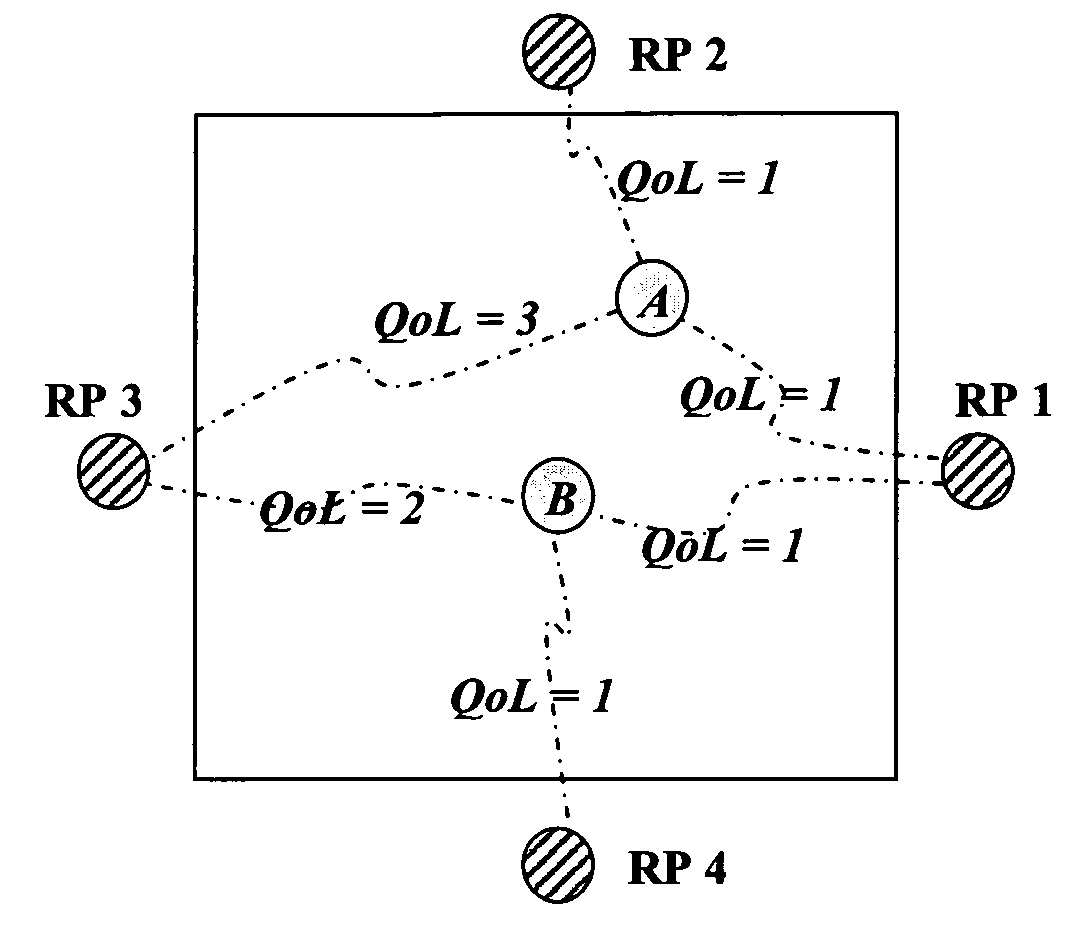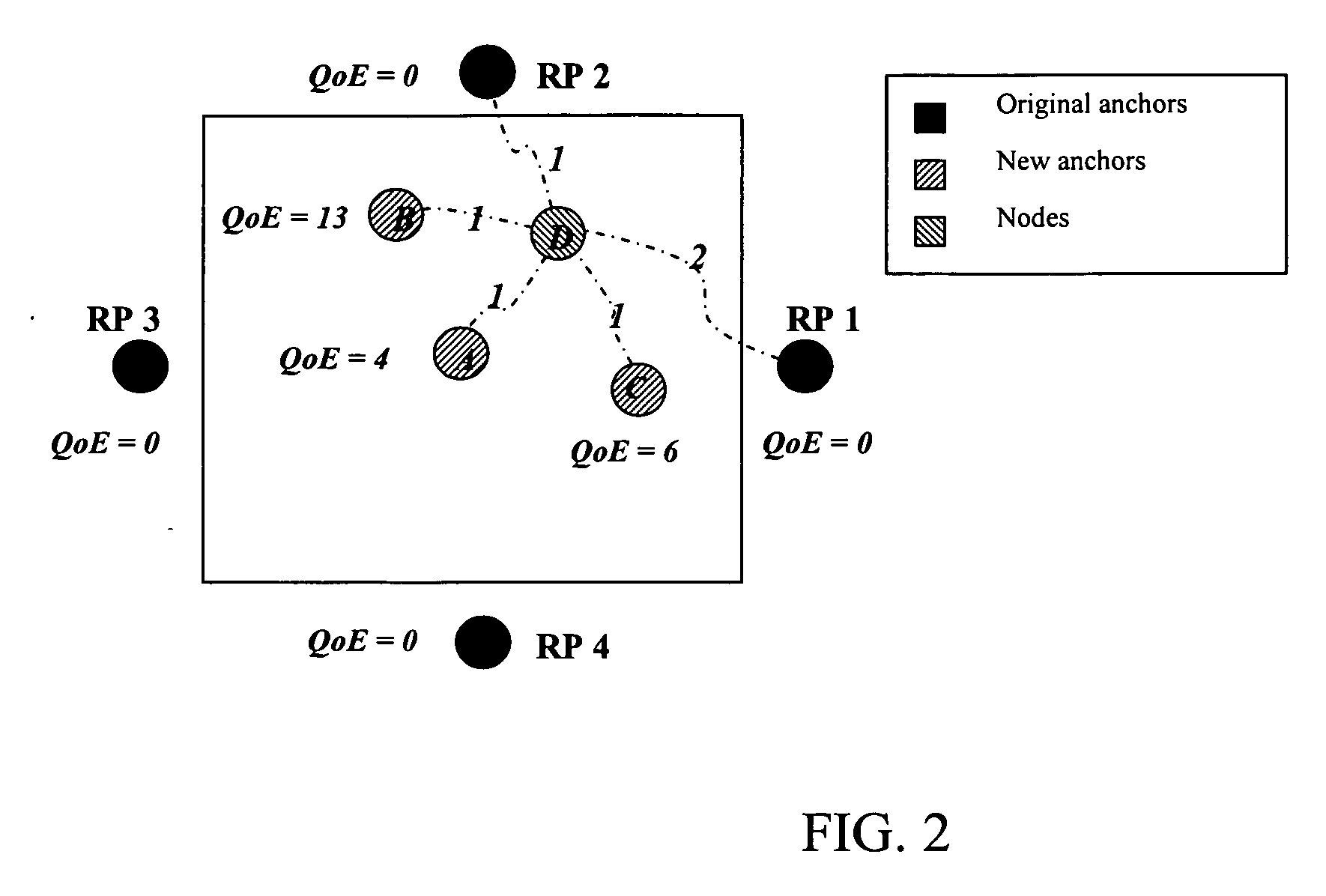Precise node localization in sensor ad-hoc networks
a sensor and node technology, applied in direction finders using radio waves, navigation instruments, instruments, etc., can solve the problems of a large degree of error in distance information, a very expensive solution to this requirement, and the sensor data may only be useful,
- Summary
- Abstract
- Description
- Claims
- Application Information
AI Technical Summary
Benefits of technology
Problems solved by technology
Method used
Image
Examples
Embodiment Construction
[0019]The invention is directed to systems and methods that efficiently configure an ad-hoc network, especially a self-configuring wireless sensor network operating in multipath-rich indoor areas.
[0020]Before describing the overall algorithm it is important to understand the different building blocks involved. The channel condition of the link between the nodes is very important in determining the quality of the position estimates. The Path-Loss Model (PLM) and Distance Measurement Error (DME) modeling efforts present detailed characterization of the channel. Indoor-indoor, outdoor-indoor and roof-indoor models provide a great insight into the behavior of the channel and the ranging errors involved. As such, these models are the very foundation for the iterative CLOQ algorithm. The Quality of Link (QoL) between nodes in an ad-hoc environment is a categorization derived from the PLM and the DME models. Table 1 below shows the translation of the received power of first path to the QoL...
PUM
 Login to View More
Login to View More Abstract
Description
Claims
Application Information
 Login to View More
Login to View More - R&D
- Intellectual Property
- Life Sciences
- Materials
- Tech Scout
- Unparalleled Data Quality
- Higher Quality Content
- 60% Fewer Hallucinations
Browse by: Latest US Patents, China's latest patents, Technical Efficacy Thesaurus, Application Domain, Technology Topic, Popular Technical Reports.
© 2025 PatSnap. All rights reserved.Legal|Privacy policy|Modern Slavery Act Transparency Statement|Sitemap|About US| Contact US: help@patsnap.com



